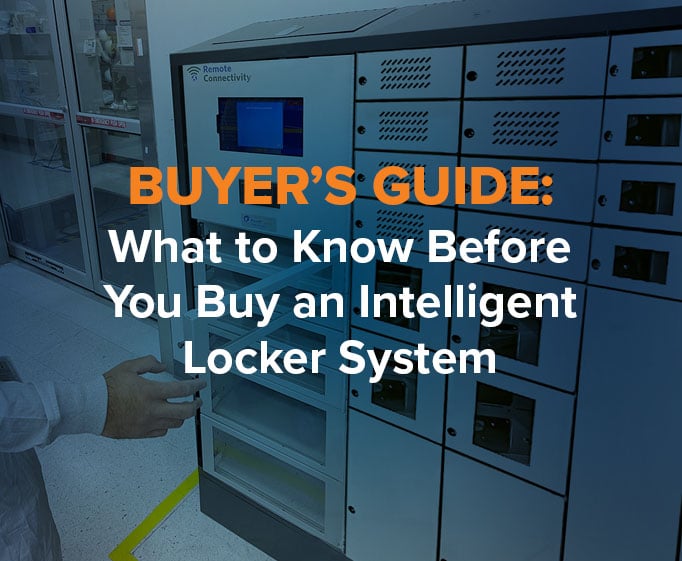By Jay Palter | August 17, 2022
Over the last several decades, computers and technology have radically altered how we carry out every business practice. Fleet management is no exception. Today’s telematics and digital automation tools offer a level of management and insight never before possible.
Do human fleet managers still have a role in tomorrow’s fleet management? Absolutely. The fleet management solutions of today and tomorrow aren’t going to replace human expertise and decision-making. Instead, they’re going to support and improve it.
Table of Contents
The Fleet Manager: More Than Just Chief Mechanic
To know where we’re going, we first need to look back at where we’ve been. In the early days, the role of fleet manager was usually more akin to a chief mechanic. It usually went to the person who cared the most about the vehicles and knew the most about how they operated.
Over time, as business changed and fleets grew in size, the role evolved and began to require different skill sets. Fleet managers no longer just tended to vehicles. They needed to manage vendor relationships, track procurement budgets, conduct training, and coordinate with other business units within their organization—the number of plates they needed to keep spinning went way up.
Today, some fleet managers still stick with manual processes, such as in spreadsheets or paper forms. But more and more fleet managers are turning to smart technology solutions to help them handle all of the complex and time-consuming tasks they face.
The Rise of Fleet Management Technologies
Fleet management underwent a slow, steady evolution in the final quarter of the 20th century as computer technology became more and more viable in automotive manufacturing. Basic telematics systems appeared in auto manufacturing centers as early as the 1970s. Desktop computing emerged in the 80s. And GPS technology took off in earnest in the 1990s. So by the turn of the 21st century, the groundwork was laid for more IT-laced fleet key management.
Since the turn of the century, business fleet management technologies have exploded. Across the board, technology had increased the pace of business, and fleet managers needed new tools to help them keep up. Today, it is common for managers of even small fleets to have one or more technological solutions to help them manage their vehicles, schedules, budgets, and all of the other information connected to their fleet.
Learn more about Real Time Networks’ smart key management solutions for fleets
Smart Key Management SolutionsWill Technology Eliminate the Role of Fleet Manager?
In short, no. The purpose of software and hardware fleet management tools is to improve how fleet managers do their job, not replace them. As we’ve discussed, the role of fleet manager has changed over the last several decades, and even within just the last five years. Real time fleet management systems helps fleet managers stay on top of the frenetic pace of modern business. Without technology, a fleet manager’s day is at risk of being swallowed by an endless stream of tedious, mundane tasks, most of which can now be automated.
Adding different car and bus fleet management technologies to your toolkit allows you to hand over those mundane tasks to software and hardware tools that can perform faster and with fewer errors than a manager ever could. They help you reclaim time to focus on the truly important work at the core of fleet management: high-level decision-making, relationships, and strategic planning. Those are all activities technology can never handle on its own.
Current Trends in Corporate Fleet Management
Fleet management constantly evolves. It pays to stay on top of the latest business and technology trends. Your fleet might be stable, but your business partners, customers, and other stakeholders might be dealing with major upheaval within their organizations. You need to be aware of the forces affecting them to help you stay connected.
New data gathering capabilities
Beyond automation, fleet management solutions give managers access to a whole new range of data they couldn’t possibly acquire through manual data collection. For example, content surveillance sensors inside key control lockers can verify whether the correct assets are taken and returned when a user signs something in or out.
Smart access control terminals also enable you to collect valuable information from users during transactions. For example, you can prompt them to log information about the vehicle they’re taking or returning. Do they see any new body damage? Were there fault codes or mechanical problems during use?
Questions don’t even need to be about the fleet vehicle itself. You can prompt users to log information about any business workflow within which they use a vehicle. For example, suppose a driver is returning from a delivery. In that case, they can log additional information about their freight or customer at the access control terminal, and the system can send an email alert to the appropriate staff member.

Next-gen telematics
New networks of wireless Internet of Things (IoT) sensors will help managers track vehicle and driver safety, ensure they’re meeting any applicable regulatory standards, and ensure deliveries make it to destinations on time. In addition, modern analytics can track driver and vehicle performance over time to identify optimal routes, high-performing drivers, and any potential issues before they cause a problem. These next-generation telematics systems streamline operations and vehicle monitoring and help managers prevent unnecessary fleet downtime.
Network security
As the shift towards utilizing networked fleet management technology continues, a new risk has emerged: internet attacks against fleet systems. Whether targeted or random, a cyberattack on even a small warehouse fleet management system could have crippling effects on your business operations. As a result, many logistics companies have started dedicated cybersecurity divisions. And CIOs at organizations with large fleets have started shifting cybersecurity positions to focus more on fleet operations.

Sustainability
Volatile fuel markets, pandemics, supply chain shortages, global conflict, and everything in world news seems to impact fleet operations directly. But, no matter whether it is for environmental or just plain economic reasons, many fleet managers are looking to transform their operations with an eye for sustainability. Many are looking to maximize their hybrid or alternative fuel source vehicles. Others are looking for efficient automation technologies like fleet key management systems.
Modern Fleet Management in Action
Let’s take a look at how one modern city—Saint John, News Brunswick—used technology to modernize its government fleet management.
Saint John, New Brunswick saves six figures thanks to automated key control
In 2016, the City of Saint John’s Fleet Services Division knew it was underutilizing its vehicles. They knew expenditures weren’t evenly distributed across departments, but they didn’t have the data to show what was happening exactly.
The Fleet Services Division conducted a survey and found that their sedans were their least driven vehicles. Some sedans were only used for a single daily appointment and nothing else. So they developed a plan to consolidate those vehicles into a shared pool. They reached out to Real Time Networks to acquire a KeyTracer fleet management solution and then developed a set of standard operating procedures for its use.

Fleet key management system had an immediate impact
The impact of pooling fleet vehicles was large and seen right away. The Fleet Services Division selected 22 of their 33 sedans to become the new pooled fleet using the KeytTracer system for city fleet management. They put the remaining 11 up for auction. This change to a pooled fleet model saved Saint John over $155,000 annually. In addition, they made a further one-time revenue of over $30,000 auctioning their 11 unneeded vehicles.
Thanks to the pooled fleet model, the City expanded the number of eligible fleet users from approximately 60 to 159. Formerly, only certain individuals had assigned vehicles. No one else had access to a car. Since vehicles were now available to any city employee who verified their driver’s license status, everyone could now use a fleet sedan for official business.
The system was so popular that other departments considered something similar for police fleet management and ambulance fleet management.
Operations problems solved by automated key management
-
It broke down departmental silos
Some departments had overutilized vehicles, others very underutilized. And no monitoring mechanism existed to promote sharing. An electronic key system allowed them to centralize and standard some of their most costly fleet services.
-
It made drivers more accountable
Without any central oversight, many drivers were lax in caring for their vehicles and keeping them on proper maintenance schedules. That led to unnecessary repair and shortened vehicle lifecycles. Under the pooled fleet model, drivers refueled and cleaned vehicles more consistently because they never knew whether their boss or someone higher up the chain would be the next to sign a car out.
-
It optimized how drivers used all vehicles over their lifecycle with the City
The KeyTracer automated key control system allowed the Fleet Services Division to rotate vehicle usage to extract as much use as possible from each vehicle over its lifecycle. They also used the key system to reserve vehicles for scheduled maintenance to keep them in good shape.
Get The Ultimate Guide to Fleet Key Management Systems
Explore how these systems work and how they can benefit your operations by streamlining fleet key distribution, enhancing security, and offering valuable insights through data analytics.
Subscribe to our blog

Jay Palter
Vice President of Marketing & Partnerships




